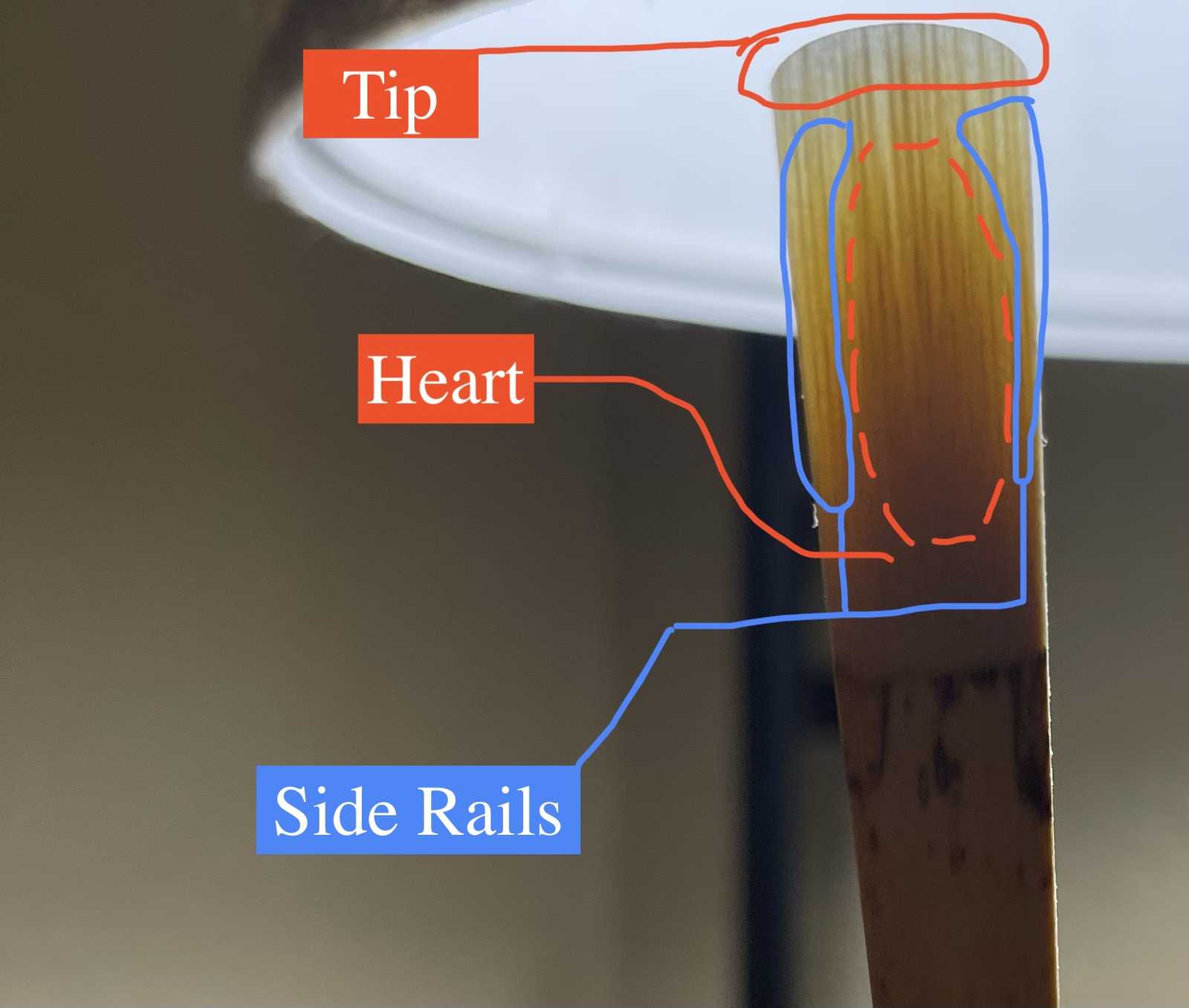The Reed Anatomy
What is the reed made out of?
The reed is created using the Arundo Donax or Giant Cane which is a part of the grass family. They are made out of long, woody, very elastic fibers that grow straight and parallel to one another that create a hollow tub shape.
When the tub is cut to the reed form, small hair length fibers create small crevices. Doing this break-in process will help close the small crevices which will combine and relax the fibers, helping lengthen the lifespan of the reed.
If those fibers do not close properly, it could lead to water filling these small crevices, making it easier for the reed to waterlog. This causes the reed to feel harder and less responsive, leaving the reed to vibrate incorrectly causing the tone to sound off and unstable.
Reed Anatomy
The reed contains two sides, the table which is the flat underside of the reed and the opposite side is the front side.
Front side of the clarinet reed

The front side has two main areas, the vamp and bark. Separating the two areas will be the file mark.
Vamp area of the clarinet reed

The vamp area contains the tip, heart and side rails of the reed. The heart area is where the student will feel the most resistances. The tip and side rails should be the thinnest part of the reed which will make it fragile and easy to damage.
Table side of the reed (flat part of the reed)

On the table side you will find the strength of the reed and any brand markings from the reed company.
The higher reed strength, the more resistance or back-pressure the player will feel when pushing air through it. Most beginners should start with a reed strength in the 2-2.5 range.
The Fibers inside the clarinet reed
The reed is made up of organic plant material which you can observe on the reed as straight lines go up and down on the wood. The fibers inside the reed create the different strengths you'll play on.
It is important to see more light through the tip and side rails of the reed than the heart area.
Related



Michael
